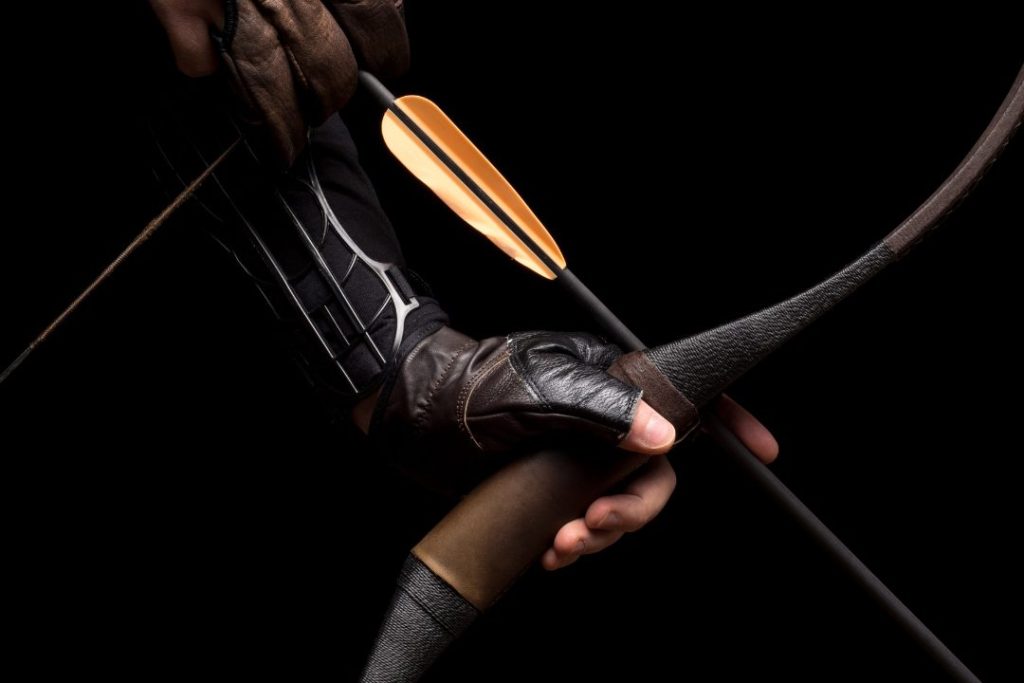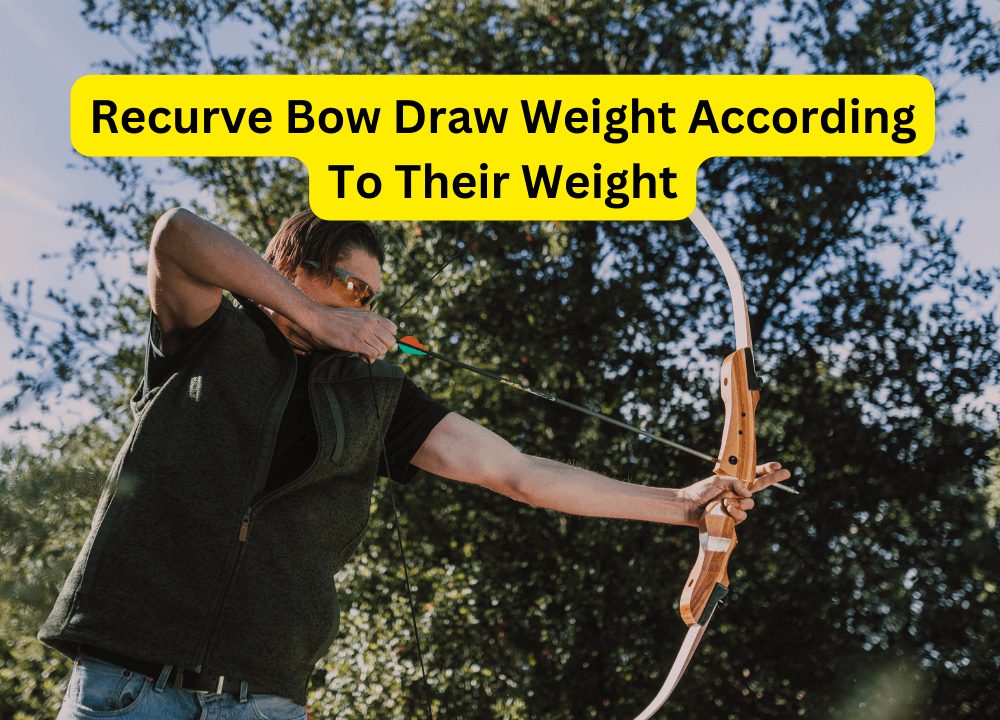
Shooting a recurve bow is a fun and challenging sport requiring skill, strategy, and practice. When the bow is not strung, the ends of recurve bows bend away from the archer. This design allows for a more efficient energy transfer from the bow to the arrow Resulting in higher arrow speeds and more penetration power.
Shooting a recurve bow requires proper kit, methods, and safety protocols. This guide will teach you how to shoot a recurve bow and set up your equipment and the appropriate stance. We’ll learn how to aim and release the arrow and tips for practice and improving skill level. Whether you are a new or an experienced archer, this guide will help you hit the bullseye and become a better shooter.
Let’s get started and learn how to shoot a recurve bow like a pro.
Equipments Required For Shoot a Recurve Bow
You need some vital gear for archery when you want to solve your problem of how to shoot a recurve bow. Having the right equipment ensures an exciting and safe shooting experience. The necessary kit for shooting a recurve bow includes:
- Recurve Bow: This is the main piece of equipment and comes in different sizes and draw weights. The draw weight is the force needed to pull the bowstring back.
- Arrows: These are the projectiles that are shot from the bow. They come in different lengths and weights, so it is crucial to choose the best size and weight for your bow.
- Arm Guard: Wears a guard on the bow’s inside arm to protect it from the string slap.
- Finger Tab Or Release Aid: The finger tab wears on the bow hand’s fingers to protect them from the string and to aid in string release.
- Quiver: A quiver helps to hold the arrows.
- Sight Of Recurve Bow: A sight is an optional piece of equipment mounted on the bow to help aim at the target.
- Stabilizer (optional): This equipment can mount on the bow to help balance the bow and reduce vibrations.
- Bow Stringer: It is a tool to safely and efficiently string and unstring a recurve bow.
How to properly size and set up the bow
To properly size and set up a recurve bow, you will need to focus on a few key factors:
Determine Your Draw Length
Determine your draw length to size and set up a recurve bow properly. This is the distance between the bow grip and the back of the arrow at full draw.
Choose The Right Draw Weight
This is the force that is necessary to draw back the bowstring. It is crucial to choose a draw weight that is appropriate for your strength and skill level.
Choose The Right Length Of The Bow
Once you have determined your draw length, you can choose a bow that is the appropriate length for you. It will determine the overall size of the bow and the length of the bow limbs. Selecting a comfortable bow length for you to hold and shoot is important.
Adjust The Bowstring
Once you have your bow, you can set it up by attaching the bowstring, the set tiller, and the nock point. Ensure that the bow is properly balanced and ready for your shooting style. The string adjusts to the right length and point.
Adjust The Arrow Rest & Sight (If Applicable)
You will need to set the arrow rest and sight. If applicable, ensure both are properly aligned with the target.
Check The Tiller
Finally, you will need to check the tiller, which is the distance between the bowstring and the limb of the bow. The tiller should be even on both sides for proper balance.
Stance For How To Shoot A Recurve Bow
The proper stance for shooting a recurve bow is comfortable and balanced, allowing the right alignment with the target. There are two main types of stance used in recurve archery:
Square Stance
The archer’s feet are parallel, pointing toward the target. This stance is considered to be the most stable and is used by many archers. It allows the archer to be well-balanced and to align the body with the target.
Open Stance
The archer’s front toa points towards the target, while the back foot is at a 90-degree angle. This stance allows for great movement and flexibility. It is often used by pro archers looking for clear shots.
Remembering that an archer’s stance is a matter of personal preference and comfort level.
Complete Guide To How To Shoot A Recurve Bow
Gripping The Bow
The proper way to grip the bow is to hold it with your fingers, not your palm. This is called a “finger tab” and is used to release the arrow. It’s crucial to ensure that the bow is relaxed and comfortable, with the fingers placed around the bow grip. The best way to check that you are gripping the bow correctly is to ensure that your index finger’s knuckle is in line with the arrow rest.
Positioning The Body
The archer should stand with their shoulders squared to the target. Keeping their back straight and their core engaged. The bow arm should be extended fully, with the elbow pointing towards the target. The non-dominant hand should position behind the bow, with the fingers extended to steady of the bow. The archer ensures that their weight is balanced over their feet and that they are not leaning too far forward or backward.
How To Hold The Recurve Bow
It’s crucial to ensure the bow is comfortable and relaxed, with the fingers placed around the bow grip. The bow arm should extend fully, with the elbow pointing towards the target. The non-dominant hand should position behind the bow, with the fingers extended to assist in steadying the bow.
How To Aim A Recurve Bow
The bow should aim at the target, with the arm extended fully and the elbow pointing towards the target. The non-dominant hand steadies the bow and helps aim it at the target. The bowstring should pull back to the corner of the mouth, with the arrow toward the target. Keep the head up and the eye on the target.
Sighting The Bow
Some bows come with a sight that can use to help aim the bow more accurately. The sight adjusts to the target’s distance, and the archer should align the sight with the target before shooting.
Anchor Point
The anchor point is where the bowstring touches your face or body when the archer pulls back the string to a full draw. It is crucial to find an exact point. It will help with the accuracy and consistency of shots. The most specific points of anchors are the corner of the mouth, the cheek, or the neck.
Finding The Right Anchor Point
The best one for you will be based on your body and shooting style. The best way to find it is to experiment with other points on your face and neck and see which one feels the most comfortable and natural. You may seek guidance from a coach or experienced archer who can help you find the right point.
Release The Arrow
Release the arrow by relaxing your fingers on the string, do not use your arm muscles to release it. Keep your eye on the target and release it smoothly and relaxedly. After the release, hold your follow-through position for a few seconds to ensure that the arrow reaches its target.
Follow-Through
Follow-through is maintaining proper form after releasing the arrow. It helps to improve accuracy and consistency.
Techniques Of Follow Through
By following these techniques, you will be able to maintain proper follow-through. Which will help to improve your accuracy and consistency when shooting a recurve bow.
- Hold your follow-through position for some seconds after releasing the arrow.
- Keep your bow arm extended and your elbow pointing towards the target.
- Keep your eye on the target, even after the arrow is released. This helps maintain proper aim and allows you to note the arrow’s flight.
- Relax your fingers on the string after release.
- Breathe outs as the shooter releases the arrow. It helps to relax your body and improve your aim.
Practice How To Shoot A Recurve Bow
Practicing is very important when you see how to shoot a recurve bow. You will develop muscle memory and improve consistency and accuracy with practice. It’s important to practice daily and to be patient with yourself while you learn and improve your skill.
It is important to note that these instructions may vary depending on your bow. It’s always best to consult the manufacturer’s instructions before using a bow and seek professional help if you want to clarify. Make sure your bow is properly set up and comfortable with it before you start shooting.




